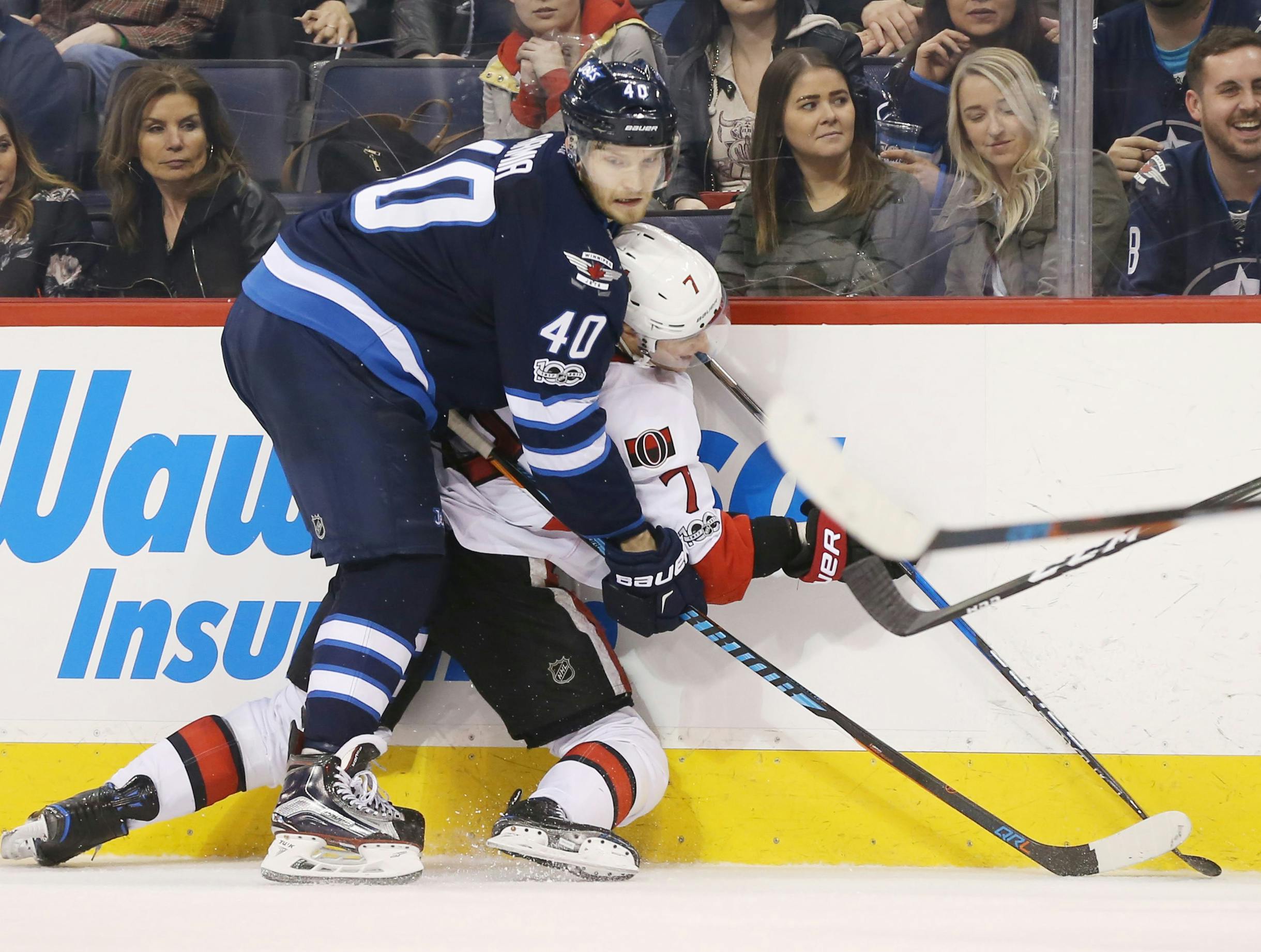Has Joel Armia Turned a Corner?

By J.D. Burke
6 years agoWith his goal to get the Winnipeg Jets on the board last night, Joel Armia was able to set the groundwork for the comeback and eventual 7-2 romp over the Minnesota Wild.
It was the fourth goal of Armia’s season, which isn’t a milestone in and of itself but sets him on pace for the most productive season of his young career. Assuming Armia remains on this course, he’ll set a new career high in goals with about 16 and in points with 40.
Of course, a cursory glance at the environmental circumstances that has fostered Armia’s production suggests that we probably shouldn’t. Based on the Corsica.Hockey expected goals model, Armia should have maybe three goals, not four. The 103.06 PDO that Armia’s running backs that number up, as does the over 13 per cent individual shooting percentage and 11.4 on-ice shooting percentage.
Each of those numbers is a bit rich, especially given there hasn’t been much in Armia’s career to suggest he’s even an average-to-above-average finisher.
That makes intuitive sense since players don’t generally double their career average output in their age-24 season. By this stage in a player’s career, we can be fairly comfortable in what their career outlook is.
At some point, Armia is going to cool down. There are far more signs to suggest that’s the case then a sudden stride offensively.
Sustainable, unsustainable — I’m sure the Jets don’t mind either way. It’s been a welcomed burst of offence for a club that’s always had the right pieces in their bottom six without the production to match.
Even if one normalizes Armia’s production, which would deduct about two of his points thus far, we’re still looking at a career-high point pace of 31 points per 82 game season, one ahead of last year’s rate. And it’s worth noting that Armia’s doing this playing almost four fewer minutes a night at five-on-five.
Where the growth is most significant, though, has been in Armia’s two-way impact. The Jets have outscored the opposition nine goals to seven at even strength with Armia on the ice.
It’s not just because of Armia’s unsustainably high on-ice shooting percentage, either. There’s a lot more at play.
The 50.96 per cent control of shot attempts the Jets enjoy with Armia on the ice this season is the highest clip of Armia’s career. The sample isn’t massive, but we’re also at about the point in the season where we can start to place a certain amount of stock in these metrics.
With Armia on the ice, the Jets control of shot attempts increases by about a three percent clip as opposed to when he’s on the bench. Most of that has come from his ability to suppress shots. The Jets are surrendering about seven fewer shot attempts an hour with Armia on the ice, whereas he has a faintly positive impact on their shot generation.
Are some of these results driven by Jets head coach Paul Maurice sheltering Armia? There’s certainly a potential for that to play a role in his sudden success this season.
Armia’s most common linemate at five-on-five has been Matt Hendricks, which makes sense as he’s been primarily on the fourth line. By that same token, Armia’s been generating positive two-way results with Hendricks, which is a remarkable feat no matter the circumstances. Together, the pair has the Jets controlling almost 54 per cent of the shot attempts at even strength.
Whenever Armia leaves Hendricks’ side, the Jets rate of shot attempt control jumps to over 60 per cent. Predominantly, Armia’s been playing with Perreault of late, which is an upgrade in role, but also pits him against a significantly more difficult run of competition.
The commonality throughout is that no matter the role, Armia’s succeeded for the Jets this season. Whether that’s as a fourth-line bit player or further up the lineup, the goals and two-way impact remain solid.
That’s a welcome, if unexpected, development for the Jets. When they dealt troubled winger Evander Kane and defenceman Zach Bogosian to the Buffalo Sabres, Armia wasn’t of prime importance as a part of the return, but he’s far from what one would call a throw-in either. At the time the Jets acquired Armia, he was considered a blue-chip prospect on the cusp of breaking through to the NHL.
At this stage, it doesn’t seem likely that Armia will ever hit on his draft-day billing as a skilled, highly offensive winger. There are a lot of signs so far this season that he’s in the process of developing into a reliable, secondary contributor, though. You can never have enough of those in your lineup.
Recent articles from J.D. Burke





